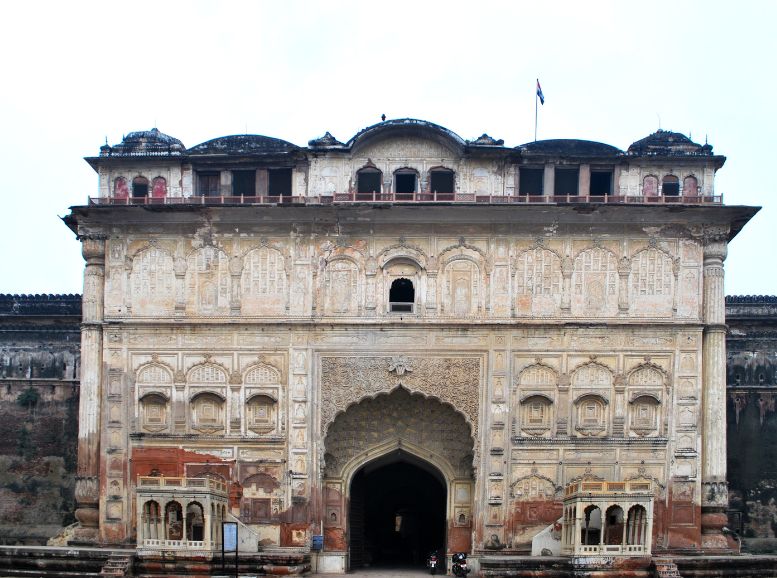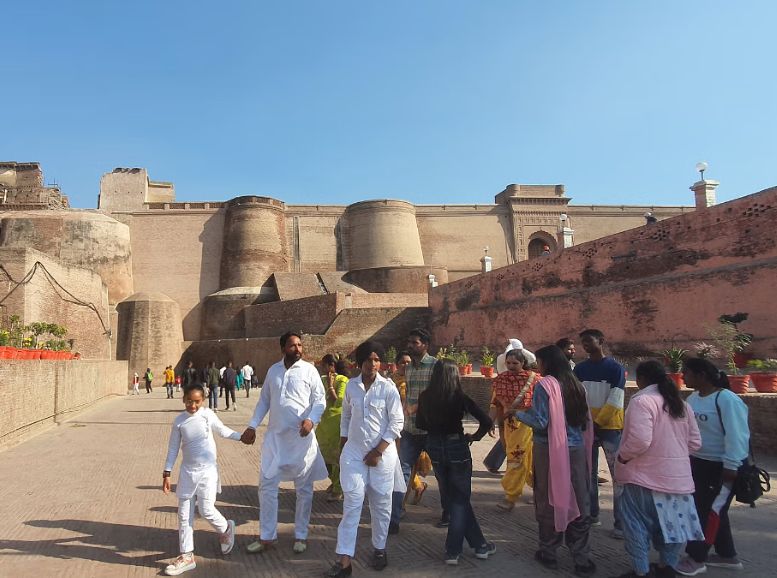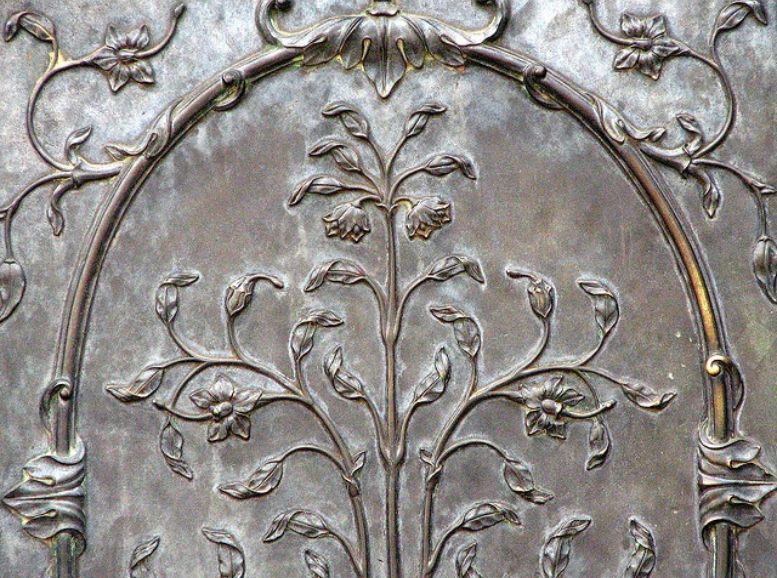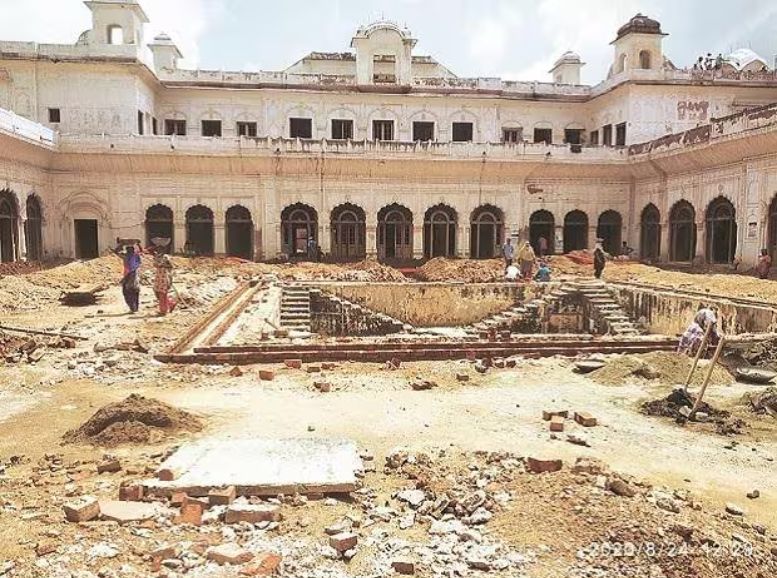Qila Mubarak: Bathinda’s vibrant cityscape cradles a silent guardian of history – Qila Mubarak. Weathered walls and a storied past whisper tales of triumphs, conflicts, and cultural exchanges, embodying the rich heritage of Punjab. Often called the “Fort of Victory,” Qila Mubarak is a tapestry woven with threads of history, architecture, and culture. From its ancient origins to its present-day role as a symbol of resilience, the fort continues to captivate visitors.
This blog embarks on a journey to explore the depths of Qila Mubarak’s legacy. We’ll delve into the secrets and stories nestled within its ancient walls. From architectural marvels to echoing legends, Qila Mubarak stands as a testament to the enduring spirit of Punjab and its glorious past.
How to reach:
By Air:
The nearest airport to Bathinda is the Bathinda Airport (BUP), located about 20 kilometers away. Several airlines offer flights to Bathinda from major cities like Delhi, Chandigarh, or Amritsar. Upon arrival, taxis and local transportation are readily available to take you to Qila Mubarak.
By Train:
Bathinda Junction Railway Station boasts excellent connectivity to major cities like Delhi, Chandigarh, Amritsar, and others. Once you reach Bathinda by train, you can hire a taxi, auto-rickshaw, or use public transportation to reach Qila Mubarak.
By Road:
Bathinda enjoys good road connectivity to various cities in Punjab and neighboring states. You can drive to Bathinda via National Highways or utilize bus services operated by Punjab Roadways or private operators. From Bathinda city center, taxis and local transportation are available to take you to Qila Mubarak.
Local Transportation:
Within Bathinda city, taxis, auto-rickshaws, and local buses are all excellent options to reach Qila Mubarak. Given its prominence as a landmark, most locals can guide you towards the fort.
Best time to visit:
- Pleasant Exploration: October to March
Winter reigns supreme for visiting Qila Mubarak. Mild temperatures make exploring the fort and its grounds comfortable. Clear skies and cooler air provide ideal conditions for sightseeing and capturing stunning photographs.
- Spring’s Touch: March to April (Early)
Spring offers another favorable window, particularly in March and early April. The weather warms gradually, avoiding the summer’s scorching heat. Surrounding gardens and landscapes might be in bloom, enhancing the fort’s beauty.
- Monsoon’s Might: July to September (Avoid if Possible)
Punjab’s monsoon season (July to September) brings heavy rain and humidity. While the rain can bring lush greenery, it can also disrupt outdoor activities and sightseeing. Unpredictable weather and potential inconvenience make this season less than ideal for visiting.
- Summer’s Scorch: April to June (Plan Carefully)
Bathinda experiences scorching summers, with temperatures exceeding 40°C (104°F) in May and June. Visiting Qila Mubarak during these months can be quite uncomfortable due to the intense heat. However, if you can tolerate the heat, early mornings or late afternoons might be more manageable.
Must-see Attractions:
A Glimpse into History:

Qila Mubarak, aptly named the “Fort of Victory,” has stood sentinel over Bathinda for over fifteen centuries, tracing its origins back to the Indus Valley Civilization (3300 BCE to 1300 BCE). Over the years, it has witnessed the rise and fall of empires, from the mighty Mauryas to the Mughal dynasty. From the architectural influences of Rajput rulers to the scars left by battles with British forces, each chapter of history has left its indelible mark on this venerable fortress.
Visiting Qila Mubarak:

For travelers seeking to immerse themselves in Punjab’s rich tapestry, a visit to Qila Mubarak is a must. History buffs can wander its ancient corridors, perhaps imagining the echoes of long-ago battles. Architecture aficionados will marvel at the intricate artwork adorning its walls, while curious explorers might even stumble upon a hidden passageway whispered about in local lore. Whether your passion is history, art, or simply soaking in the ambiance of centuries gone by, Qila Mubarak offers a wealth of experiences waiting to be discovered.
Legends and Lore:

Qila Mubarak transcends mere monument; it’s a living testament to the legends that breathe life into Punjab’s cultural identity. Whispers of folklore, from the mythical tales of Raja Bhartari to the heroic exploits of Maharaja Ranjit Singh, permeate the fort’s very stones. Each legend adds another layer to Qila Mubarak’s mystique, drawing visitors deeper into its enigmatic embrace.
Preserving the Past:

In recent years, Qila Mubarak has received much-needed attention. Conservation projects, like the refurbishment of its intricate mirror work, aim to restore the fort’s former glory. Educational initiatives, such as guided tours highlighting its architectural styles, seek to raise awareness about its historical significance. Today, Qila Mubarak stands not just as a relic of the past but as a symbol of Punjab’s enduring spirit and cultural heritage.
Local experiences:
History Buff:
- Historical Tour: Embark on a guided exploration of the fort’s various sections, including the Darbar Hall. Witness the architectural grandeur and hear stories of its rich past. Local guides can weave tales of empires, battles, and the fort’s enduring legacy.
Nighttime Explorer (if applicable):
- Light & Sound Show: Immerse yourself in a captivating evening experience (if offered). Watch the fort come alive with light and sound, narrating the legends and history etched within its walls.
Shutterbug:
- Photography Extravaganza: Qila Mubarak’s architecture, from its intricate details to the surrounding landscapes, offers a photographer’s paradise. Capture the essence of the fort, vibrant local life, and the beauty of Punjab.
Culture Enthusiast:
- Live Performances: Be on the lookout for live cultural performances showcasing traditional Punjabi music and dance near the fort. Witness the vibrant tapestry of Punjabi culture come to life.
Foodie at Heart:
- Local Culinary Delights: After exploring the fort, tantalize your taste buds with Punjabi cuisine. Savor traditional dishes like makki di roti and sarson da saag, or delve into local street food specialties.
Shopaholic Alert:
- Market Treasures: Explore the vibrant markets around Qila Mubarak. Find unique handicrafts, traditional clothing, and souvenirs to commemorate your visit and take a piece of Punjab home with you.
People Person:
- Local Interactions: Strike up conversations with friendly locals. Learn about Bathinda’s history and cultural significance firsthand. Their stories and insights will enrich your understanding of the region.
Travel tips:
- Research & Discover: Before you embark on your journey, delve into the history, significance, and cultural aspects of Qila Mubarak and Bathinda. This background knowledge will deepen your appreciation for the destination.
- Respectful Attire: As you’ll be visiting a historical site, dressing modestly is recommended. Comfortable footwear is essential for navigating the fort grounds.
- Hydration is Key: Bathinda’s summers can be scorching. Carry a reusable water bottle and stay hydrated throughout your visit.
- Sun Safety: Sunscreen, a hat, and sunglasses are your best friends, especially during daytime exploration.
- Respectful Interactions: Be mindful of local customs and traditions, especially when visiting religious sites or interacting with locals. Respecting their culture goes a long way.
- Safeguard Your Belongings: Keep your belongings secure, especially in crowded areas. Avoid venturing alone into unfamiliar territory, particularly at night.
- Transportation Savvy: Plan your transportation beforehand. Consider hiring a local guide for historical insights, using public transport, or renting a vehicle.
- Language Skills: While English and Hindi are widely spoken, knowing basic Punjabi phrases can be helpful, especially in rural areas.
- Punjabi Culinary Adventure: Don’t miss the chance to savor local Punjabi cuisine. However, be mindful of dietary restrictions and spice levels.
- Travel Insurance: Consider travel insurance to cover medical emergencies, trip cancellations, or unexpected situations.
Conclusion
Quila Mubarak in Bathinda, Punjab, presents an enriching exploration of history and culture. The fort’s rich heritage, striking architecture, and lively surroundings offer a unique window into the region’s past. By adhering to essential travel guidelines like prior research, appropriate attire, hydration, cultural respect, and safety precautions, visitors can optimize their Quila Mubarak experience. For a deeper understanding, consider engaging a proficient local guide from Xplro.com, who can offer comprehensive insights into the fort’s historical significance and architectural marvels. Whether delving into the fort’s details, relishing cultural performances, sampling local cuisine, or interacting with amiable locals, a journey to Quila Mubarak promises enduring memories. Embrace the allure of this historical gem and immerse yourself in its timeless charm, with Xplro.com enhancing your exploration.
FAQ
- What is Quila Mubarak?
- Quila Mubarak is a renowned historical fort situated in Bathinda, Punjab, India, with origins dating back to approximately 90-110 AD. It stands as a testament to rich historical and architectural heritage.
- What are the operating hours of Quila Mubarak?
- Quila Mubarak generally welcomes visitors during specific hours. For the most accurate information, it’s recommended to refer to the official website or directly contact the management.
- Is there an entrance fee for Quila Mubarak?
- Yes, there might be an admission fee for accessing Quila Mubarak. The fee structure can vary for domestic and international visitors, and it’s advisable to inquire about current rates before planning your visit.
- Are guided tours offered at Quila Mubarak?
- Certainly, guided tours are available at Quila Mubarak. Local guides offer valuable insights into the fort’s history, architecture, and significance. You can hire a guide at the entrance or through online platforms like Xplro.com.
- Is photography permitted inside Quila Mubarak?
- Generally, photography for personal use is allowed within Quila Mubarak. However, restrictions on flash photography or tripods may apply. Visitors should confirm the photography policy upon entry.
- Are refreshment facilities available within Quila Mubarak?
- While dedicated food stalls may not be present within Quila Mubarak, nearby eateries or vendors typically offer refreshments. It’s advisable to carry water and snacks, particularly for extended exploration.
- Is Quila Mubarak accessible for wheelchair users?
- Quila Mubarak may have certain accessibility provisions, although visitors are advised to verify specific details regarding wheelchair access with the authorities. Some areas may pose challenges due to uneven terrain or stairs.
- What are the primary attractions within Quila Mubarak?
- Key attractions within Quila Mubarak include the Darbar Hall showcasing remarkable architecture and historical artifacts, along with various sections highlighting the fort’s rich cultural and historical significance.
- Is parking available nearby Quila Mubarak?
- Yes, parking facilities are often available near Quila Mubarak for visitor convenience. However, parking availability and fees may vary based on the time and day of visitation.
- Can children accompany visitors to Quila Mubarak?
- Absolutely, Quila Mubarak welcomes visitors of all ages, including children. However, parental supervision is recommended, especially in areas with historical artifacts or uneven terrain.
- Are there additional attractions near Quila Mubarak?
- Indeed, several other attractions await exploration in Bathinda and its environs, such as Bathinda Lake, Lakhi Jungle, and the Qila Mubarak Complex. Crafting a comprehensive itinerary ensures coverage of multiple attractions during the visit.
- What attire is suitable for visiting Quila Mubarak?
- Visitors are advised to wear modest and comfortable attire suitable for exploring historical sites. Lightweight, breathable clothing, comfortable footwear, and sun protection like hats and sunscreen are recommended, particularly during warmer weather.



